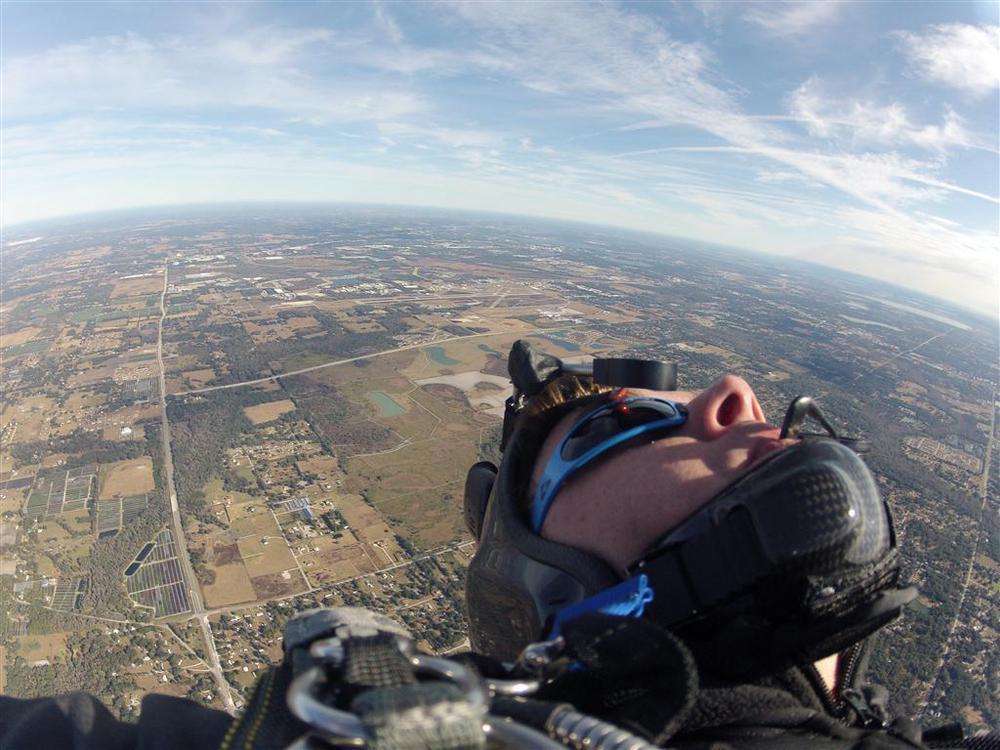Recommended Posts
shayelk 0
Quote
Really to answer the OP question, additional questions need to be asked like what part of military jumps do you want to know about, in what setting, for what purpose.
There is no specific setting or purpose i want to know about, I was just curios to know why are round parachutes used, as I always thought they were obsolete.
What does "stealing each other's air mean?
If it's not clear from my original post- my question wasn't about what canopy I'll need for a certain job, but more of a general pro's and con's thing- just out of sheer curiosity.
Thanks again for sharing your knowledge with me and my apologies for my poor English, as it's not my native language.
Jbag 0
its b/c the leaders dont want troops making decisions. square canopy will let them fly wherever they want from 800'
riggerrob 643
What does "stealing each other's air mean?
...
...................................................................
"Stealing some one else's air" means steering your parachute directly underneath them, so that they no longer have "clean" air and their rate of descent increases. "Stealing Air" usually results in collisions and one canopy collapsing, so two guys try to land one parachute HARD!
or "Leap Frogging" with the last "Leapie" loosing.![]()
Matt
So, start being safe, first!!!
chbrook 0
I'm speaking as a graduate of both Basic airborne and MFF
Chuck
SStewart 13
QuoteTo sum this up, it all comes down to money. Basic Airborne is 3 weeks as it is. The military does not have the time or $$$ to invest in a simple mass air drop that can be accomplished with minimal canopy skills. Most of the training focuses on how to land and not get hurt. The job starts after the landing, the jump needs to be accomplished quickly and cheaply.
I'm speaking as a graduate of both Basic airborne and MFF
Chuck
Right on the money, pretty much the same reason FS Smoke jumpers still use rounds. To the agency the jumpers are just cargo, a mode of reliable transportation to the ground and nothing more. It is not supposed to be "fun"
Also, rounds are better in tall timber. Squares don't like tree baranches too well and are more prone to collapse.
"A square will get you there, but a round will get you down"
nigel99 479
Also as others have mentioned there is very little control and input required (or even available) on a round which means less training required and less chance for operator error for example hook turns aren't an option on a C9.
Quote
there is no guarenting that they won't run into each other but the main attribute about them is that they come straight down more or less
So, our steerable SF-10A's just come straight down?
Ya do know on a round you can still do one or two riser slips, and can really haul some ass with them sometimes (hey, shorter walk back to the t/i area for me
QuoteSome units use squares spec ops etc etc. but for the most part they use rounds so they can drop a large amount of troops in one area without them running into each other and they open much quicker, so they can be dropped out as low as 300 or maybe even lower
Just cause they're spec-ops doesn't mean shit about jumping squares... usually one out of about 10 get to go to MFF.
You wanna jump a T-10 type at 300'? Let me know how that works out for ya....
Sure, It'll probably open in time, but that landing is gonna suckkkkkkkkkkkkkk
DPH -7, TDS 578, Muff 5153, SCR 14890
I'm an asshole, and I approve this message
I would think also there would need to be MUCH less consideration given to wing-loading under a round, when the jumpers could be carrying up to 80+ lbs of gear.
Just my initial impression. ![]()
riggerrob 643
T-10 was originally designed for a 170 pounds soldier and little more than his weapon and web gear, but over the years the Army has added another 170 pounds of rucksack, rifle and snowshoes and "light-weight equipment" and landing got so painfully hard that they had to introduce the SET -10, T-11, British LLP, French TAP 30, etc. to reduce the incidence of leg injuries.
If you enjoy military S/L jumps, there is something wrong in your head!
Hah!
Hah!
QuoteIf you enjoy military S/L jumps, there is something wrong in your head!
Hah!
Hah!
DPH -7, TDS 578, Muff 5153, SCR 14890
I'm an asshole, and I approve this message
The T-10 has been rated for 400 ish pounds for as long as I can remember, but memory is slipping.
Matt
So, start being safe, first!!!
Andy9o8 2
When I jumped T-10s, the landings were light as a feather.
Of course, I weighed 115 lbs then, too. ![]()
Lots of good answers here but the key point everyone has missed is that more or less, round, non-steerable parachutes will all drift with the wind at the same speed, direction and decent rate. Yes there will be some differences because of weight but generally they're all wind dummies. If they had steerable canopies it would be a total goat fuck with lots of injuries.
505 Parachute Infantry Regiment, 82d Airborne Division
1986-1990 ![]()
Nanny State Liberation Front









Mass drops were tried at one time with square parachutes and it proved to be unsuccessful but not for the sole reason of them running into each other. Rounds can and do run into each other and there is also the issue of stealing each other's air from being in the stream of another's chute. Another is because of training. It is far more effective to train a person to be able to do a job with less complications than spend greater amounts of time for something that doesn't have an effect for overall mission success.
As for openings, ramairs can open pretty dam fast and easily faster than a round. Look at the volume of air that is required to inflate a round compared to that of a ramair.
A round parachute also serves to benefit the user a lot more than a ramair would after they have reached the ground. Many that have taken military survival courses know this. There is a reason some of the chutes are coloured the way they are, for instance a quad-colour C9. Each colour has a purpose.
Really to answer the OP question, additional questions need to be asked like what part of military jumps do you want to know about, in what setting, for what purpose.
Good for you being so quick to reply and give an answer but to some up the reason in one sentence is not giving a meaningful answer to the question. Just something to think about.
Share this post
Link to post
Share on other sites